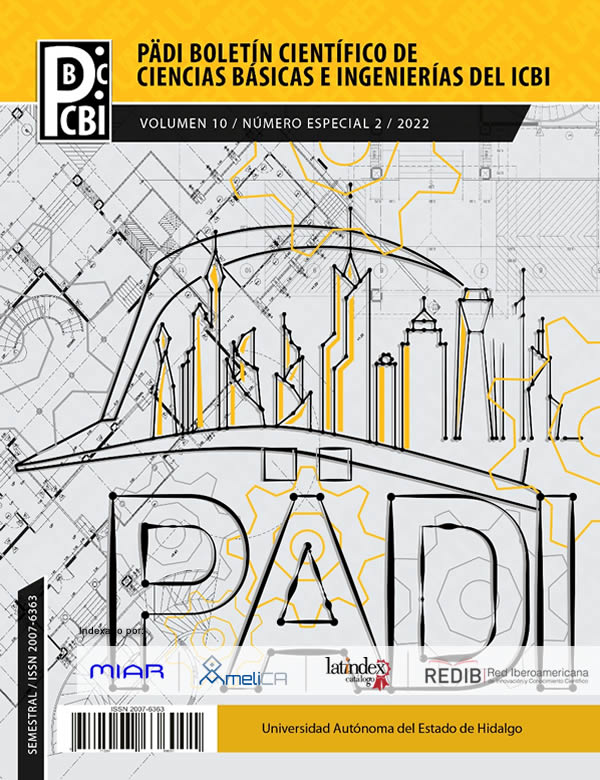Load cell set-up for indirect stress test
Abstract
The compressive strength of concrete mixtures is achieved by designing systems that meet the mechanical and durability properties established by national and international standards. In this work, a customized load actuator element is proposed in the generatrix, both in the upper and lower part of the cell, to have a better load distribution in the specimen and to exert a uniform support in the contact section for the indirect tensile test. In this project, a device was designed and manufactured that can serve as instrumentation for the Controls modC-43C04 brand press to serve specimens, in which the concrete is subjected to tensile stresses with greater intensity, where it is expected that the steel of reinforcement is the one who acts by absorbing these efforts. Through the mechanical tests, it was established that the cell complies with a functional design and with the needs of the press for which it was adapted.
Downloads
References
ACI:211.1-91, (2002) - Standard Practice for selecting proportions for normal, heavyweight, and mass concrete: American Concrete Institute.
American Standard for Testing and Materials (2017). ASTM C-496/C496M, Standard Specification for Molds for Forming Concrete Test Cylinders Vertically, USA.
American Standard for Testing and Materials (2009). ASTM C-470, Standard Specification for Molds for Forming Concrete Test Cylinders Vertically, USA.
Alhussainy F., Hasan H.A., Sheikh M.N., Hadi M.N.S., (2019). A new method for direct tension testing of concrete. J. Test. Eval. 47, 708-718. https://doi.org/10.1520/jte20170067
Attewell, P.B., Farmer, I.W., (1973). Fatigue behaviour of rock, Int. J. Rock Mech. Min. Sci. 10, 1–9. https://doi.org/10.1016/0148-9062(73)90055-7.
Arioz, O., (2007). Effects of elevated temperatures on properties of concrete, Fire Saf. J. 42, 516–522. https://doi.org/10.1016/j.firesaf.2007.01.003
Bagde, M.N., Petroˇs, V. (2005). Fatigue properties of intact sandstone samples subjected to dynamic uniaxial cyclical loading, Int. J. Rock Mech. Min. Sci. 42, 237–250. https://doi.org/10.1016/j.ijrmms.2004.08.008.
British Standard (1983), Compressive strength of test specimens, British Standards Online, Britain.
Chhorn, C., Hong, S.J., Lee, W., (2018). Relationship between compressive and tensile strengths of roller-compacted concrete, J. Traffic Transp. Eng. 5, 215–223. https://doi.org/10.1016/j.jtte.2017.09.002.
Erarslan, N., Alehossein, H., Williams, D. (2014). Tensile fracture strength of brisbane tuff by static and cyclic loading tests, Rock Mech. Rock Eng. 47, 1135–1151. https://doi.org/10.1007/s00603-013-0469-5
Fuentes Espinoza, F. (1982). Ensayos mecánicos en metales. Universidad Autónoma de Nuevo León, Facultad de Ingeniería Mecánica y Eléctrica, Monterrey.
Ghosh, S., Dhang, N., Deb, A., (2020). Influence of aggregate geometry and material fabric on tensile cracking in concrete, Eng. Fract. Mech. 239, 107321. https://doi.org/10.1016/j.engfracmech.2020.107321.
Jin, L., Miao, L., Han, J. (2018a). Size effect tests on shear failure of interior RC beam-to-column joints under monotonic and cyclic loadings, Eng. Struct. 175, 591–604. https://doi.org/10.1016/j.engstruct.2018.08.092.
Jin, L., Yu, W., Su, X., Zhang, S., Du, S. (2018b). Effect of cross-section size on the flexural failure behavior of RC cantilever beams under low cyclic and monotonic lateral loadings, Eng. Struct. 156 (2018) 567–586, https://doi.org/10.1016/j.engstruct.2017.11.069.
Krzemień, K., Hager, I., (2015). Post-fire assessment of mechanical properties of concrete with the use of the impact-echo method, Constr. Build. Mater. 96, 155–163. https://doi.org/10.1016/j.conbuildmat.2015.08.007
Lajtai, E.Z., (1969). Strength of Discontinuous Rocks in Direct Shear, Department of Geology, University of New Brunswick, USA.
Liao, W.C., Chen, P.S., Hung, C.W., Wagh, S.K. (2020). An Innovative Test Method for Tensile Strength of Concrete by Applying the Strut-and-Tie Methodology. Materials. 13, 2776. https://doi.org/10.3390/ma13122776
Masías, K. (2018). Resistencia a la flexión y tracción en el concreto usando ladrillo triturado como agregado., Universidad de Piura, Facultad de Ingeniería, Perú.
Menendez, E., Vega, L., (2010). Analysis of the behaviour of the structural concrete after the fire at the Windsor Building in Madrid, Fire Mater. 10, 95–107. https://doi.org/10.1002/fam.
M-MMP-0-02-058, (2004), Resistencia a la compresión simple de cilindros de concreto, México.
M-MMP-0-02-059, (2004), Resistencia a la tensión en cilindros de concreto, México.
Moreno, E.I., Solis, C., Rómel G., Varela, A.R., (2016). Tensile strength of concrete with high absorption limestone aggregate. Concr. cem. investig. 8, 35-45. http://www.scielo.org.mx/scielo.php?script=sci_arttext&pid=S2007-30112016000200035&lng=es&tlng=.
Nejati, H.R., Ghazvinian, A. (2014). Brittleness effect on rock fatigue damage evolution, Rock Mech. Rock Eng. 47, 1839–1848. https://doi.org/10.1007/s00603-013-0486-4.
NMX-C-021-ONNCCE. (2015) Industria de la Construcción - Cemento para Albañilería (mortero) - Especificaciones y Métodos de Ensayo, México.
NRCMA. (2020). Concrete in practice. https://www.nrmca.org/wp-content/uploads/2020/04/35pr.pdf
Oneschkow, N. (2016). Fatigue behaviour of high-strength concrete with respect to strain and stiffness, Int. J. Fatigue. 87, 38–49. https://doi.org/10.1016/j.ijfatigue.2016.01.008
Resan, S.F., Chassib, S.M., Zemam, S.K., Madhi, M.J., (2020). New approach of concrete tensile strength test. Case Stud. Constr. Mater. 12, 347. https://doi.org/10.1016/j.cscm.2020.e00347
Sahuinco, M.H.C., (2011). Utilização de métodos não destrutivos e semi-destrutivos na avaliação de pontes de concreto, Tese De Doutorado. UniversidaDe De São Paulo.
Sarfarazi, V., Ghazvinian, A., Schubert, W., Nejati, H. R., Hadei, R., (2017). “A New Approach for Measurement of Tensile Strength of Concrete”, Periodica Polytechnica Civil Engineering, 60, 199–203. https://doi.org/10.3311/PPci.8328.
Song, Z., Frühwirt, T., Konietzky, H., (2018). Characteristics of dissipated energy of concrete subjected to cyclic loading, Constr. Build. Mater. 168 47–60. https://doi.org/10.1016/j.conbuildmat.2018.02.076.
Su, C., Lin, H., (2017). Mechanical performances of steel fiber reinforced high strength concrete disc under cyclic loading, Constr. Build. Mater. 146, 276–282. https://doi.org/10.1016/j.conbuildmat.2017.04.090.
Wang, W., Wang, M., Liu, X., (2016). Study on mechanical features of Brazilian splitting fatigue tests of salt rock, Adv. Civ. Eng. 25, 436. https://doi.org/10.1155/2016/5436240.
Ye, J.H., Jeng, D.S., (2012). Response of porous seabed to nature loadings: waves and currents, J. Eng. Mech. https://doi.org/10.1061/(ASCE)EM.1943-7889.0000356.
Zhong, H., Lin, G., Li, X., Li, J., (2011). Seismic failure modeling of concrete dams considering heterogeneity of concrete, Soil Dyn. Earthq. Eng. 31, 1678–1689. https://doi.org/10.1016/j.soildyn.2011.07.001.













